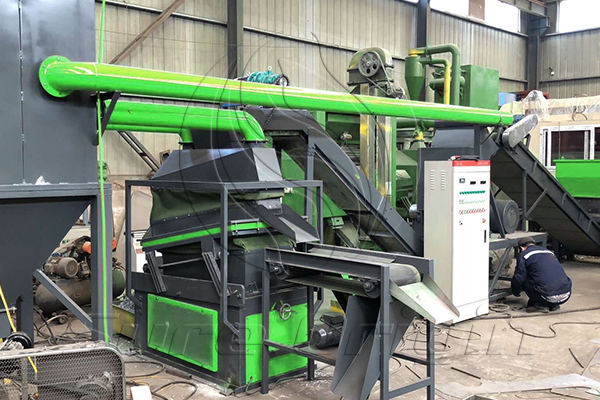The heat sink copper and aluminum sorting equipment separates the aluminum and copper foil materials from scrapped heat sinks for recycling. The entire production line operates under negative pressure, eliminating dust emissions during production, ensuring a cleaner and more environmentally friendly production environment. Dust emission concentrations meet environmental standards. This shredding equipment scientifically and effectively processes and disposes of the copper and aluminum in the heat sinks, offering significant environmental and economic benefits. The key to this heat sink copper and aluminum sorting equipment is its automated recycling process. The production line begins with scrapped heat sinks entering a shredder for shredding. The shredded heat sinks then enter a specialized crusher for shredding, breaking up the copper and aluminum in the heat sinks. The shredded material then flows through an induced draft fan into a hopper, where it is then collected and purified by a pulse dust collector. The material entering the hopper passes through a closed-circuit blower and enters an airflow sorting screen. Airflow and vibration collect the copper and aluminum in the heat sinks, while also collecting the dust generated by the airflow sorting screen. The mixture is then separated and recycled using a combination of hammer crushing, vibration screening and airflow sorting processes to separate and recycle the heat sink components.

Copper and aluminum heat sink separation equipment
Product features
From appearance to structure, from overall to details, from performance to configuration, the new copper and aluminum radiator shredder as a whole reflects the confidence and determination of China Recycling Technology in product upgrades and technological innovation.
(1) The use of heat sink copper and aluminum separation equipment can recycle aluminum, copper and iron from waste radiators, which are of high value.
(2) The equipment has a high degree of automation and can separate and process aluminum and copper tubes in air conditioners, refrigerator radiators, and copper and aluminum water tanks;
(3) High efficiency and low labor cost. The equipment adopts a double-door design for easy disassembly and maintenance;
(4) The use of PLC automation control enables coordinated work between system equipment and a better working environment;
 English
English


